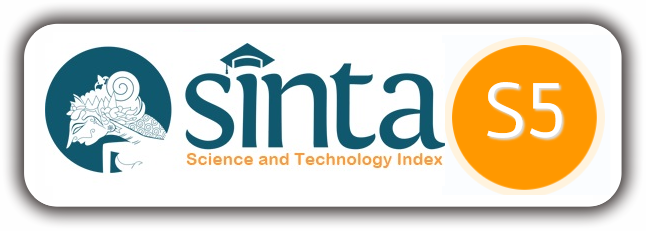PELANGI: INOVASI PELAYANAN AKTA KELAHIRAN DI KOTA BANDA ACEH
DOI:
https://doi.org/10.22373/jai.v5i1.462Abstract
One form of bureaucratic reform in public services is to bring innovation. Since 2015 the city of Banda Aceh has implemented innovations in birth certificate services, by presenting PELANGI (direct servants). Pelangi is a mechanism for making birth certificates based on a mobile car with a proactive system. Department of Population and Civil Registration of the city of Banda Aceh visited villages in Banda Aceh City and provided birth certificate registration services on-site. The purpose of this study was to find out how the implementation of the "Pelangi" program and the extent to which the program was able to increase ownership of birth certificates in the city of Banda Aceh. The research method chosen is descriptive qualitative. With the hope of being able to answer in more detail related to Department of Population and Civil Registration's efforts in increasing the ownership of birth certificates for residents of the city of Banda Aceh through the innovation of the Pelangi. The key informants in this study came from officers and leadership elements of the Department of Population and Civil Registration of Banda Aceh and village officials who were partners. While data collection techniques are obtained through observations, interviews and documentations. Data analysis technique is done by reducing data, presentation and verification. The results of this study indicate that the implementation of the Pelangi innovation in the city of Banda Aceh based on a mobile car has become one of the innovations that is able to increase the number of birth certificate ownership in the city of Banda Aceh.
Published
How to Cite
Issue
Section
License
Authors who publish with this journal agree to the following terms:
- Authors retain copyright and grant the journal right of first publication with the work simultaneously licensed under a Creative Commons Attribution License (CC-BY-SA) that allows others to share the work with an acknowledgment of the work's authorship and initial publication in this journal (See The Effect of Open Access);
- Authors are permitted and encouraged to post their work online (e.g., in institutional repositories or on their website) prior to and during the submission process, as it can lead to productive exchanges, as well as earlier and greater citation of published work;
- Authors are able to enter into separate, additional contractual arrangements for the non-exclusive distribution of the journal's published version of the work (e.g., post it to an institutional repository or publish it in a book), with an acknowledgment of its initial publication in this journal.
















